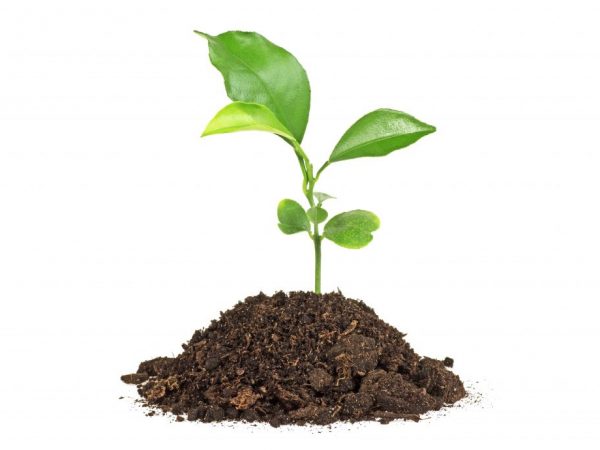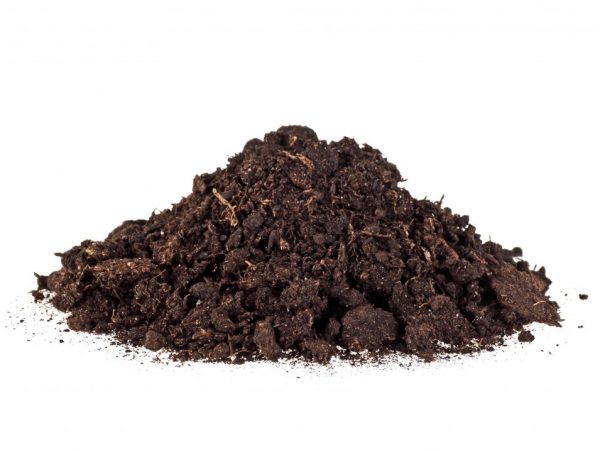How to prepare citrus soil
Citrus trees are often grown at home. These are capricious plants that require special care. It begins with the question of how to choose and prepare the right soil for citrus fruits.

Preparing citrus soil
Characteristics of the soil
Caring for citrus fruits begins with selecting the ideal soil for them. It should be as close as possible to the composition of the soil on which these plants grow in natural conditions. For this, light, loose, water and air permeable earths are used. Heavy soils with clay constituents prevent water and air from reaching the root system and are therefore not suitable for such purposes. Excessively light peat bogs also do not have the necessary characteristics for growing plants, in contrast to loams and sandstones.
A low acidity level is set in a substrate suitable for growing citrus fruits. Lemons and other members of the species prefer neutral soils or close to neutral ones, with a pH of 6-7 units. High acidity or alkalinity of the earth leads to the rapid aging of the plant.
In the soil, using litmus paper, the level of hydrogen ions is determined: they regulate acidity.
An improvised way is to check with currant leaves. A few leaves of black currant are placed in a jar, poured with hot water. After cooling, a small lump of earth is thrown into the infusion. A change in the shade of water to reddish is evidence of a high acidity index.
The filled pot should help the crops grow. Drainage is initially placed at its bottom. The density of the substrate should allow the development of the root system. If the root bends around the entire clod of earth and makes its way through the hole at the bottom of the container, it is time to replant the tree, having worked well on the looseness of the soil and its mineral storage.
Substrate constituent elements
It is impossible to find suitable land for growing citrus fruits in our latitudes. It is preferable to make special soil mixtures yourself. Often for this purpose, purchased soil is used, designated for lemons, but it uses its potential after 1-1.5 years, then it is changed. Such frequent transplants are not recommended for plants.
The key ingredients for mixing a comfortable substrate for these trees are:
- Garden soil, preferably old, which is formed under fruit trees and bushes. It has a special nutritional value at a distance of half a meter from the tree trunk, namely a layer 7 cm thick. The soil from molehills is even more appreciated: it is neutral in acidity, free from the remnants of roots and insects, light, crumbly. Such land is prepared in summer by sifting through a sieve.
- Sod is a soil layer that is located under perennial forbs: chamomile, clover, timothy, bluegrass, etc. - in meadows and pastures. Grasses growing there choose neutral or slightly acidic soil. Sod on a sandy basis is suitable for growing, it is lighter, with exposure under a dark film for at least 2 years.To use, sod is sifted through a sieve, removing excess roots and stems. The acidity is reduced by adding lime or wood ash.
- Leafy soil is a layer of humus of fallen leaves of maple, oak, birch, linden and other trees growing away from cities and highways. It is possible to prepare such a soil on your own, raking the leaves into a heap, pouring liquid manure and water and waiting 2 years. More often, the thickness of the earth is removed in a deciduous forest right under a layer of last year's green mass. To lower the acidity, lime is added at the rate of 500 g per 1 m³.
- Peat land results from the mixing of decomposed peat from raised bogs and humus. Such soil reaches full readiness in 3 years. Its acidity level is slightly higher, therefore lime is used for neutralization - 3 kg / m³ or wood ash - 9 kg / m³. Peat soil is designed to improve the structure of the substrate, increase the function of absorbing and retaining moisture.
- Compost is the result of natural decomposition of organic waste, mainly of plant origin. It is prepared in a special pit using the means intended for this for 2 years. Before use, the compost is sieved and steamed to disinfect and get rid of weed seeds.
- Manure humus is formed after complete decomposition of manure waste. Its quality depends on the source material. Horse humus is considered the best for citrus fruits. In the substrate, this component is used to saturate it with useful elements and enrich it.
- River or lake sand is added to the substrate as a component that can impart lightness, friability, and enhance the air permeability of the soil. It is a prophylactic agent against fungus and rot of the root system, perfectly retains moisture and heat. For this purpose, only coarse, pre-washed sand is suitable.
Preparing the soil for citrus fruits

The soil must be disinfected
Before starting planting, it is important to mix all the ingredients correctly in order to obtain a suitable substrate. For this purpose, fertile lands and elements that dilute them are used, as well as fertilizer. A successful citrus planting depends on the gardener's meticulousness when mixing the ingredients.
There are several recipes for this. Leafy earth, turf and humus in equal parts are mixed with river sand, which is taken in an amount of not more than 10% of the total mass of the mixture, 200 g of superphosphate is added there. One part of the peat soil is added to this composition.
You can increase the nutritional value of the substrate by increasing the part of the leafy land. The composition of the substrate, which includes 2 parts of garden soil, one part of peat and sand, is enriched with the addition of manure or humus in an amount of 10 of the total volume.
The prepared substrates are thoroughly mixed and disinfected. To do this, the soil is calcined in an oven at a temperature of 80 ° C-90 ° C for 60 minutes. or boil in water (take 8 kg of the mixture per 1 liter of liquid) for half an hour. This method removes the soil from pathogenic bacteria, harmful fungal and infectious diseases, insects and worms. Such an action also worsens the general microflora of the earth, therefore, parts of the substrate that can be dangerous are subjected to such preventive methods.
Citrus soil can also contain artificial ingredients. These are rock minerals and rocks that are industrially processed. These include perlite, vermiculite, expanded clay and dolomite. These materials are used to drain the soil, improve air outflow and create porosity in the soil, to maintain moisture, and also to saturate the elements necessary for plant nutrition.
Mineral enrichment of soil
The fertility and endurance of trees is provided by a substrate rich in mineral components.Some representatives of these plants cease to bear fruit or slow down the ability to actively grow without some of the substances they need. It is important to add top dressing to the composition of the substrate both before planting and during the active growth of citrus fruits.
For these purposes, ground charcoal is suitable, which is able to increase the immunity of plants to fungal and putrefactive formations. They reduce the acidity of the soil and provide the root system with lime and wood ash with active elements. Sulfates and ammonia fertilizers help to improve the palatability of fruits and increase the ability to grow green mass of trees. Using them in the proportions appropriate for each variety and at the right time will ensure citrus flowering at home.
Conclusion
The composition of the soil when planting citrus crops plays an important role. At home, they use ready-made mixtures, but to increase the effectiveness of the work, soil mixtures are used. The substrate should be filled with useful elements as much as possible and prepared for planting citrus fruits.


